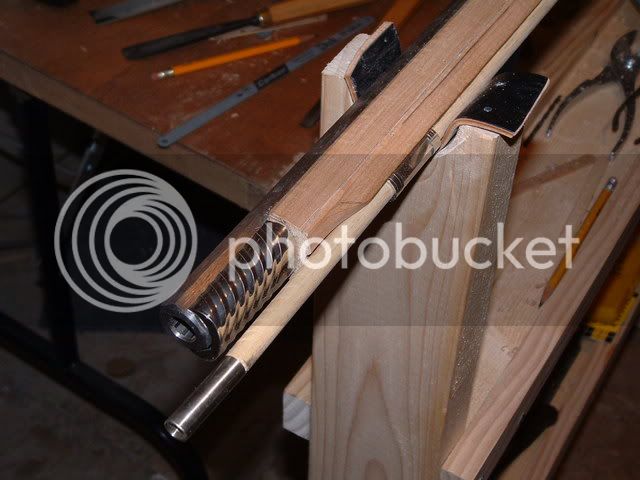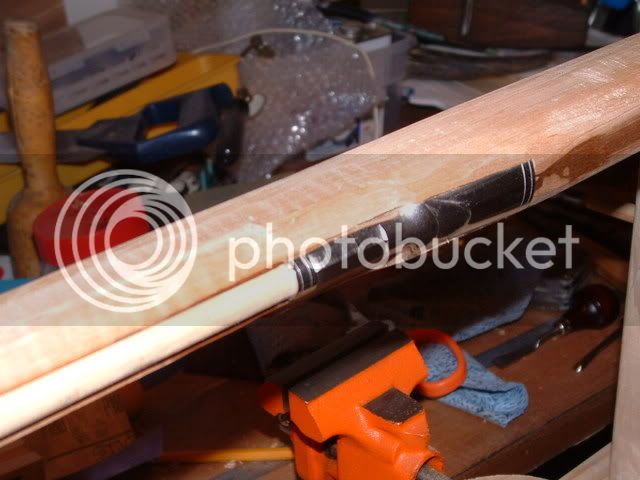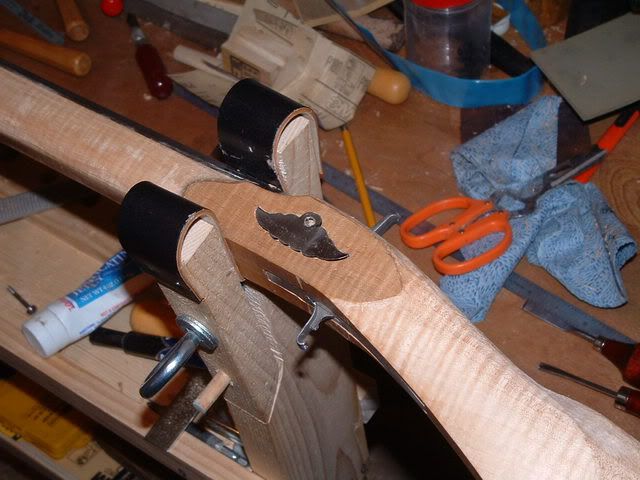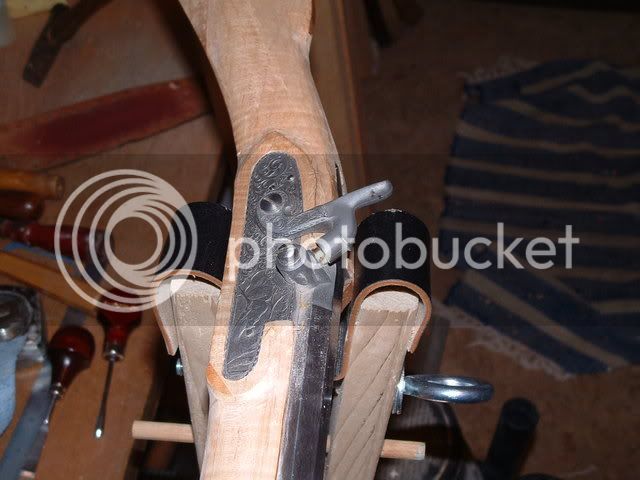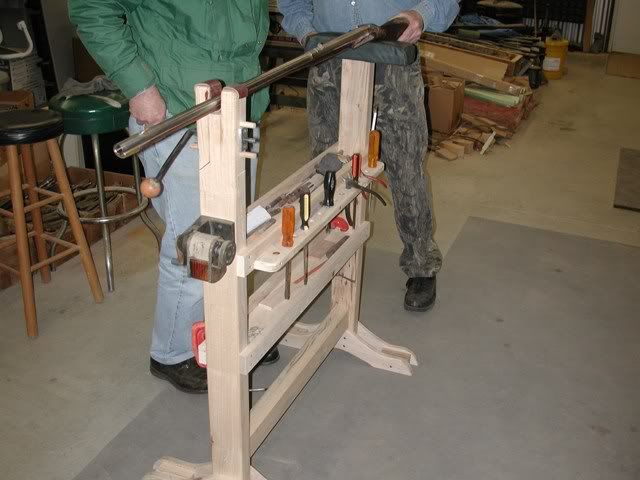Bill,
Way to go!! You are on the right track. I generally do one side of one specific area and then the other.
Working from a blank gives you the advantage of fitting it to you prefectly, instead of the "average" fit of a precarve,( although some precarves can be modified, if left large enough.)
Make sure you know "exactly" the trigger pull, drop, and cast off you want before you go too far.(A "try stock" will really help here.)
Assuming the barrel and tang are inlet, and centerlines established from there, top and bottom,(they will have to be redrawn many times.), the first step is to inlet the LOCK at the right place. This determines both the trigger location, and thus the buttplate location(for correct pull), but more importantly, establishes the width of the wood on the lock side of the stock.(usually a fat 1/4" or so of wood in lock area, if you leave the plate bevel proud.)( I then do the same on the "washer" side). This, along with buttplate and and barrel width, will determine the measurements for the rest of the whole stock, both fore and aft.
I always figure a fat 1/8" width of wood ON EACH SIDE of the barrel from foreward of the lock area to entry thimble,(wrist will be this same width or a bit wider for a swamped barrel) and a fat 1/16" from there to muzzle, depending on style,and following countour of barrel, if swamped.
Also, do not make the stock too "HIGH" through the wrist and lock areas, that is, You do not need more than about a fat 1/8" of wood beneath the RR hole from the guard to entry thimble, IMHO , and also keep the panel around the lock "slim", about 1/8".
Another mistake some folks make, is leaving the edges of the buttplate too "thick", in the side view. Most originals show only about 1/16" or less on the side view of plate edge.
As said before, take the cheekpiece into consideration.
I also do the butt one side at a time, always working from the centerlines. Different styles, and :results:
Sorry for the ramble, and hope this helps instead if confuses. (Get EVERY BUILDING BOOK you can get your fingers on, and adapt each to YOUR style.
Regards,
Terry








